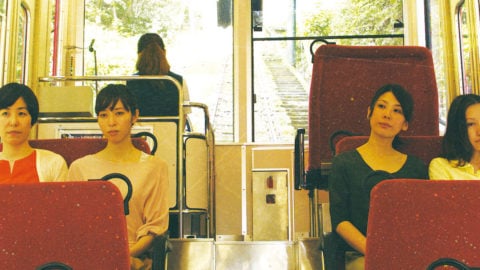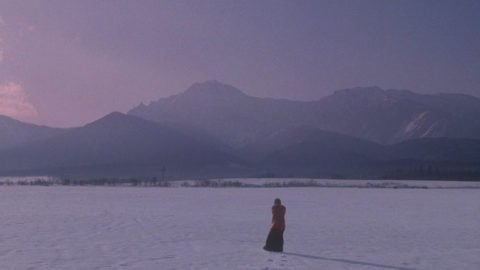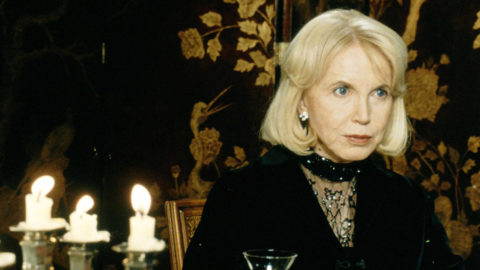Cannes Interview: Ryusuke Hamaguchi
Since its unassuming debut at the 2015 Locarno film festival, Ryûsuke Hamaguchi’s Happy Hour has become something of a cinephile cult item. A generous and revelatory film that might best be described as falling into the classical genre of the “women’s picture,” this freewheeling five-hour drama concerns a quartet of female friends negotiating a variety of domestic and artistic passions, and it continues to resonate with dedicated viewers in the way a lengthy novel might. By contrast, the 39-year-old Japanese director’s sixth and latest fiction feature, the quietly wise and perceptive Asako I & II, unfolds with the efficiency and poetry of a novella.
A moral tale in the guise of a suburban romance, Hamaguchi’s adaptation of a book by Tomoka Shibasaki hinges on a series of echoes, doubles, and disappearances. In what amounts to an extended prologue, the film’s first section introduces our protagonist Asako (Erika Karata), a charming yet impressionable young college student, as she crosses paths with Baku (Masahiro Higashide), an attractive stranger, after an art show. Within seconds they’re lip-locked as fireworks signal their seemingly preordained coupling. But when, following a series of unexplained absences, Baku vanishes for good, Asako is left devastated and alone.
Fast-forward a few years and Asako is now dating the curiously familiar Ryohei (also played by Masahiro Higashide), a local sake salesman and the spitting image of her former boyfriend. On the surface their relationship seems healthy, until Baku, now a famous model, reenters Asako’s life, and she is forced to reconcile her feelings regarding her emotional investment in each, and how one has prompted the other. With subtle command and a gift for elliptical storytelling, Hamaguchi tells this fable of love lost and found through a series of stylistic grace notes, serendipitous narrative strokes, and unexpectedly raw displays of emotion. Rare is the film whose female lead is granted such autonomy, allowing a complicated character to be perfectly imperfect.
Talking with Film Comment at Cannes following the premiere of Asako I & II in competition, Hamaguchi was wide-eyed and delighted by his first trip to the Croisette, happily commenting on the adaptation and casting process, the film’s relationship with early Hollywood comedy, and workshopping his ideas into a tightly scripted romance, complete with happy ending.
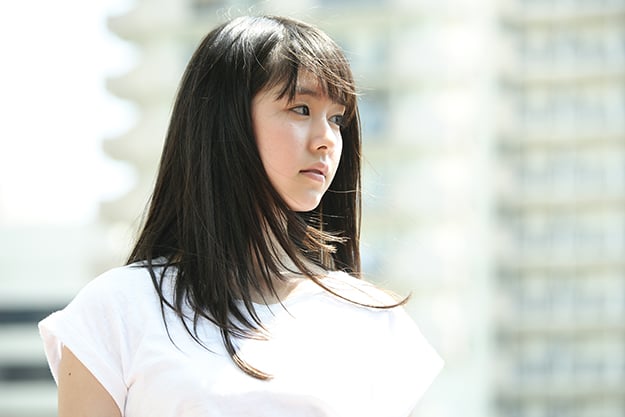
Can you tell us a little bit about the novel and what inspired you to adapt it?
This all started about six years ago, when someone who had seen my films recommended the novelist Tomoka Shibasaki’s work as something I might enjoy, and so I read a couple of her novels and found myself really liking this one. I thought that it would make a good film because it has visually intriguing elements built into it, the two being: what to show and what not to show. The first, what to show: of course you have to show the two men who look exactly the same, and it’s the story of a woman who falls in love with these two men—and this premise really spoke to me from the beginning. The way that the novel presented this story was very contemporary, which I really liked, a meticulously detailed account of everyday life. It’s written in first person, and things that happen can be very out there, but it’s written in such detail that you go along with it, and I thought it would be interesting to see that translated onto film.
And then the other side, what not to show, was equally interesting for me as a filmmaker. Of course, in the last 30 minutes, when Asako goes off with Baku and then ultimately returns to Ryohei, the novel doesn’t explain at all what’s going on inside Asako’s mind. As a reader, it was a really interesting way to experience this story, and I felt, even though there were no explanations, that I could intuitively understand Asako’s motivations—not because her life overlaps with my life in any way, but because I was able to intuit what she had done and what she would do through my own life experience. I wanted to do the same with the film, by showing only Asako’s actions, to hopefully let the audience imagine what her motivations are, and what her inner self-workings were. I wanted to make a film that is an adaptation of this story, and to structure it in such a way that would feel intriguing.
You mentioned the last 30 minutes, but were there any additional elements that you personally added to the story, things you supplemented the main story with?
Rather than adding anything, it was more a process of condensing, sorting, and losing things. If it had been translated into English, the novel would have been about 500 pages, and so we obviously had to shave certain things off. I felt that the novel’s core, the pillar of its story, was that last development we were just talking about. I wanted to make sure that the audience would understand what was going on, even without an explicit explanation. But the novel dedicates about half its story to doing just that, which comes in the form of Baku’s story. In the film, Baku only takes up about a quarter of the story, but his existence helps me get the audience to where they need to be.
There’s almost a dimension of magical realism to the film’s first quarter. The way characters meet, for example, is completely serendipitous, and later when they kiss after the motorcycle crash, it is unbelievable but beautiful. In those moments there seems to be an element of early Hollywood comedies and romances.
It’s a great compliment that you use the words “magical realism.” I consciously decided to employ the conventions of genre films in the telling of this story because I felt that it would help the audience to accept what was happening a little bit easier. It also helped with the pacing of the film, employing these conventions allowed the film to move a lot faster than usual without losing the audience. Those who don’t really understand those conventions might feel what is happening to be a little strange or even grotesque—or maybe a better expression is absurd, surrealist, or illogical. But one of the things I wanted to do was to have realism and surrealism coexisting: allowing something real to come out of this absurd situation, or to have some absurd quality rooted in the reality that we crafted. So it’s a compliment that you see that as a kind of magical realism.
Your two most recent films deal primarily with female characters. Is this a newer development in your career, or are you simply drawn to telling these kinds of stories?
The fact that I have female protagonists in my last two films, or that I place importance on female characters rather than male ones, is something unique to these two, yes, but maybe it’s something I’ve always wanted to do. Male or female, the way I work with them is the same, but I am interested in the idea of having female protagonists and telling female stories in my films moving forward.
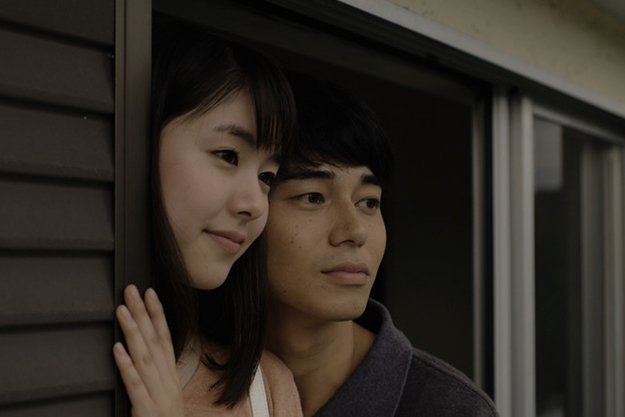
Casting the male lead, Higashide Masahiro, was obviously a very important part of the film. How did you go about casting him, and getting to the point where you knew this was the right person to play two roles? And further, can you talk a little about the process of getting him in the right mindset to play both Baku and Ryohei?
Masahiro was always my first choice for the role. When I started thinking about this adaptation, from the very beginning, I always thought he would be an ideal fit. I had seen his acting debut, The Kirishima Thing [2012], and found that he has this external quality that really draws people’s attention—he’s beautiful and mysterious—and recently another Japanese director, Kiyoshi Kurosawa, has experimented with this too. So, it was this external quality that was initially most appealing, but I’ve also seen him on talk shows and such, and he has a very gentle, tender soul, and he really expresses himself in a sincere way, which is so rare for people in the entertainment industry. And so, because of this duality, I thought Masahiro was perfect to play these two roles. His external beauty and mystery would translate well for Baku, and for Ryohei, he has those qualities of gentleness and sincerity.
Playing two roles was something we had talked about a lot, and we decided not to do anything in excess. Obviously, the clothing and hairstyle must be different, but also—and this may be something that non-Japanese people don’t pick up on—the language that Baku and Ryohei use is different. Baku’s accent is from Tokyo, and Ryohei’s is from Osaka, and these accents reflect their characters—people from Osaka typically sound more upbeat, for example. The accents also informed the physicality of the characters, and we felt that, with all of these small things working in unison, there would be enough to delineate one character from the other. Our absolute rule was not to interfere with the audience’s recognition that these were two different characters. Obviously, they use the same actor, so they are, in a way, the same person, but we wanted most to differentiate the two through the storytelling. We never said, “Baku has to be this way!” or “Ryohei has to be like this because he’s different!”—we did none of that, which was important to us.
Happy Hour was mainly workshopped through improvisation and used predominantly non-actors. This film feels much more scripted and planned out, presumably using professional actors. Is that the case, or was there some improvisational dimension to this film, too?
One of the main differences between the methods of the two films is the number of hours we were able to dedicate to the performances. For the previous film, you’re right, we workshopped with the actors for about six months, and then the shooting took about eight months, but this was only because the actors all had jobs and we could only shoot on the weekends. So that was obviously a very long process. And though this film, too, took many years to develop, when it comes to the matter of the performances, we had everyone meet maybe a month before principal photography began, but because of Masahiro’s busy schedule, the workshop only lasted one week. There’s also the difference in the lengths of the two films. Happy Hour is five hours long, whereas this film is only two hours. Obviously, this leads to a difference in preparation.
As for the matter of improvisation, I kind of carried on in the style that I had established with Happy Hour, which was very much a kind of repeated reading of the text. My workshops are basically having the actors not perform but read the text over and over, and for these readings I ask my actors not to add any nuances or inflections. It’s more about reading the text aloud, over and over, until they can almost say it automatically, and there comes a moment when I can hear it in their voice—a certain weight or thickness—and the words that are written are completely absorbed into the actors. Once we accomplish this, it’s time to shoot. That’s a method I had established with my previous work, and, even with Happy Hour, the scenes that were improvised mostly came through workshopping. Apart from the longer sequences which were deliberately done differently, everything is scripted. Once it comes time to shoot, once we’re on set, how the actors express that fully absorbed text is entirely up to them. I don’t prohibit anything, so whatever they feel in that moment, or however they react to the other person, as long as it’s real, that’s what I’m looking for.
Both films deal with themes of performance, identity, and communication—acting, metaphorically and literally. Is that something you’re focusing on and trying to work through cinematically?
I think the elements that you mention are related to certain sequences in each film—perhaps the monologues and elongated sequences of Happy Hour, and the allusions to theater here—but these are all things that occur organically. It’s not that I’m consciously trying to introduce them. Maya, the actor character, was already in the original novel, so the theater aspect comes from her. And Asako, the main character, did photography herself in the novel, but I felt that it would make the story too complex, although I did take that photographic element and use it in the film. I think that, when it comes to performance or art, instead of just shooting objects or people, there’s a certain fortitude that comes in to play. In other words, in order to give a performance or create a work of art, you need to spend a great deal of time practicing, honing your skills and your craft. It’s a highly condensed form of time that you’re capturing on film––it’s multi-layered, but when you capture that properly it adds a certain quality, and that’s why I do it.
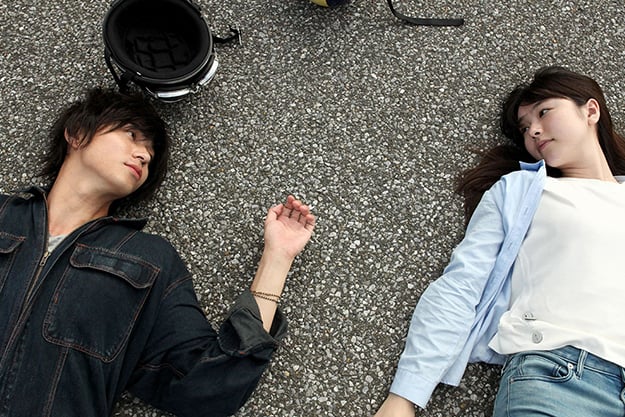
These elements seem to lead to comparisons with Jacques Rivette, even though your movies don’t necessarily operate in the same way. They’re not necessarily fantastical or allegorical, but they do, at least in this film, feature doublings and disappearances. I’m curious what your influences are, and if Rivette is not one, who you look to in terms of filmmaking sensibility, and specifically for this film?
It’s a great honor that you mention Jacques Rivette’s name. I haven’t seen all of his films, but the ones I have I really like—especially L’amour fou and La Bande des quatre [Gang of Four], which both, of course, have to do with theater. There are other journalists who mention Out 1, but unfortunately it has never shown in Japan with Japanese subtitles, so I’ve never seen it. But it’s a great honor to be compared to Rivette. With La Bande des quatre, I love that scene where she’s asked to perform and suddenly the frame takes on a certain tension. That’s what I was talking about before with that kind of fortitude in performance and art.
But when it comes to the directors who I admire the most, Jacques Rivette is not one of them. I think it was an American website that asked me to list directors who inspired me, and I really thought about this. I said names like Howard Hawks, John Cassavetes, Kiyoshi Kurosawa—who was my teacher, actually—Jean Grémillon, and Masahiro Machino.
There’s definitely a Hawksian dimension to the early part of the film, which is what got me thinking about early Hollywood.
Even your mentioning that name, to say that my work is Hawksian, that’s a great compliment. I also forgot a very important person’s name: Éric Rohmer. Especially when it comes to how I should craft my films, Rohmer is more of a guide for me than Rivette.
The film ends on a bittersweet note: the two characters describing the same thing in different ways. Would you say you share the outlook of one character over the other? Do you share a similar sense of resignation to fate, for example?
Neither, honestly. I don’t think I really relate to either of the two. But I really like that you considered the ending to be bittersweet, because I thought it was the first happy ending I’ve been able to give one of my films—finally! I see this as a very positive way of ending this story, because, although they have gravely wounded one another, they still choose to be together, and to move ahead in their lives together. I don’t think you can call that anything other than a happy ending. But you saying that actually reminds me of a Douglas Sirk retrospective, held about 10 years ago in Japan, which was titled, “The Happy Ending of Sorrow.” I really liked that idea, and I wanted to make a film like that.
Jordan Cronk is a critic and programmer based in Los Angeles. He runs Acropolis Cinema, a screening series for experimental and undistributed films, and is co-director of the Locarno in Los Angeles film festival.



